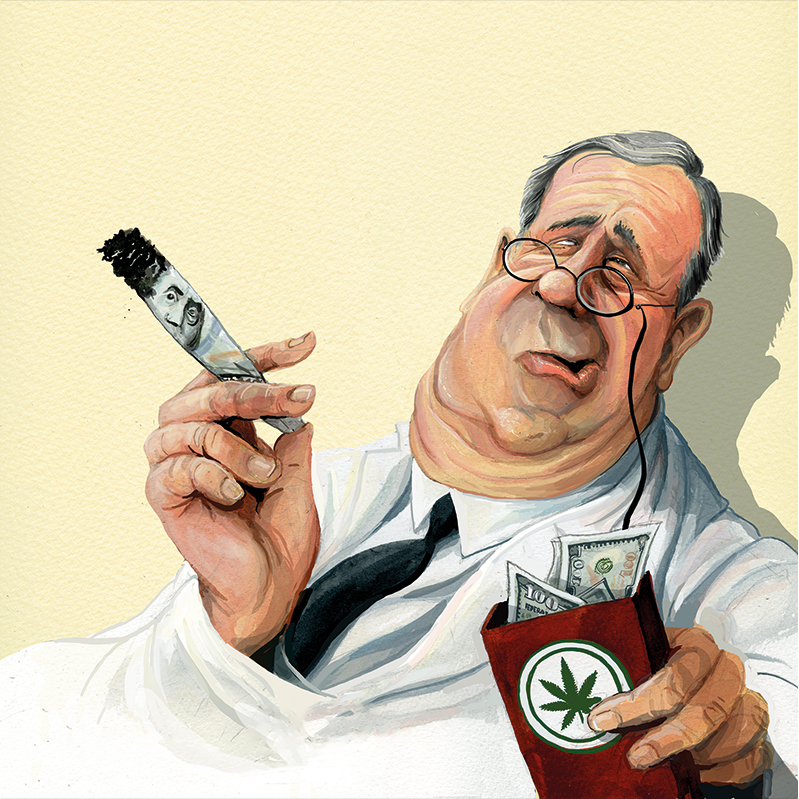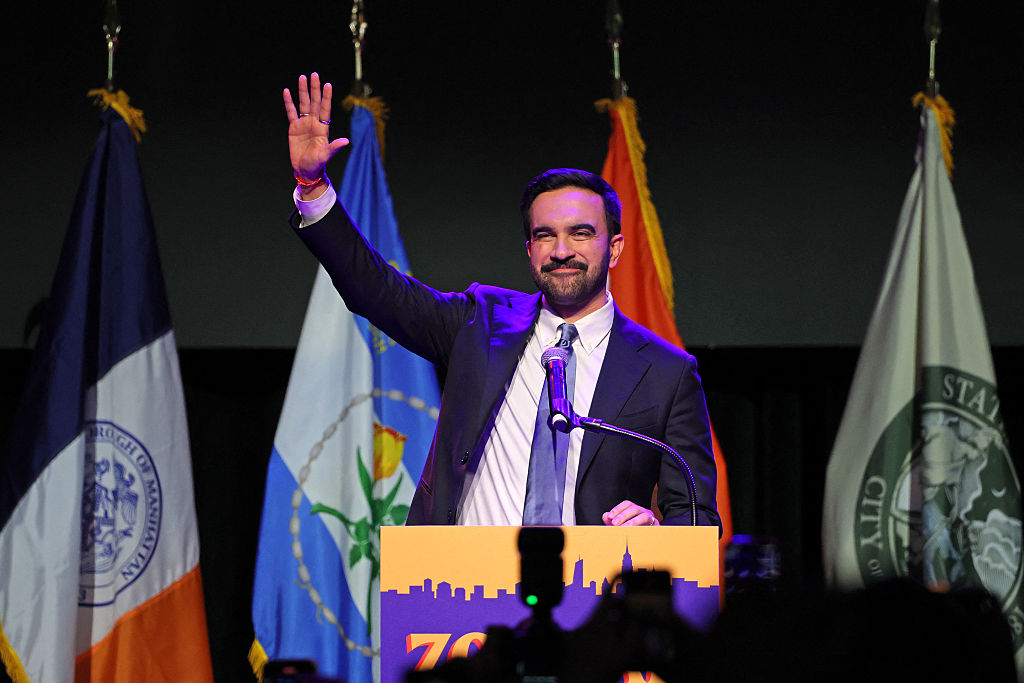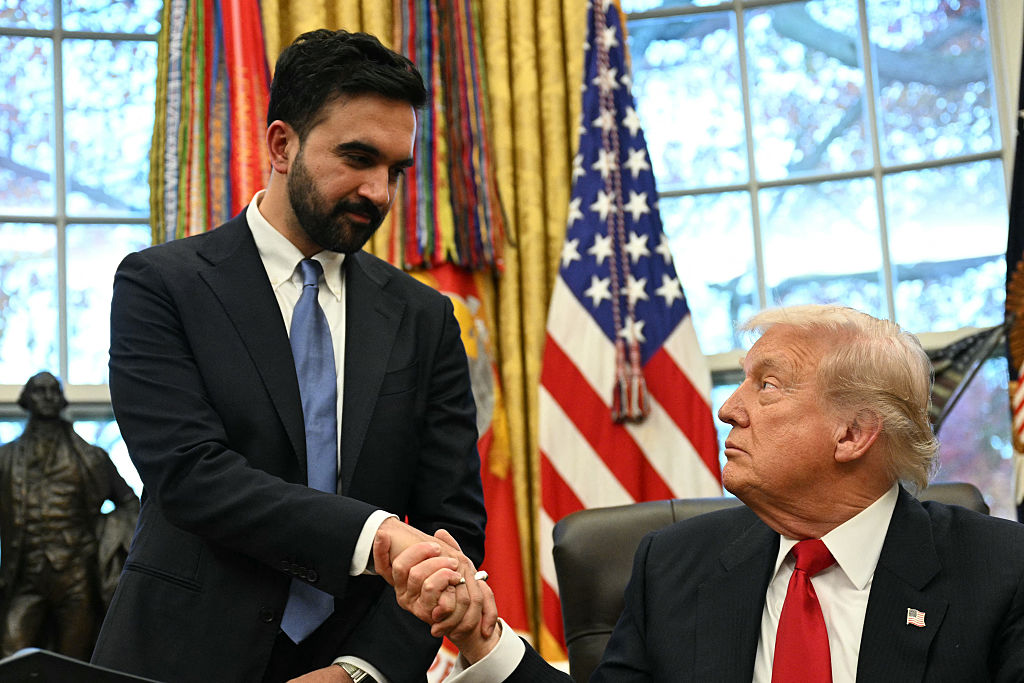On the day the Marihuana Regulation & Taxation Act (MRTA) was signed into law in 2021, the man who was to become mayor of New York City, Zohran Mamdani, made the following statement: “I’m proud to be here today to debate the adult use of marijuana – also known as loud, Sour D, herb, Mary Jane, kush, green, pot, weed, zaza, a jazz cigarette and marijuana. In the course of this debate I’ve heard many of our colleagues from across the aisle discuss that smoking or ingesting marijuana is an indication of lawlessness and a deteriorating quality of life, makes one lazy and a burden to society, serves as a gateway drug. And amidst this fiction and frankly coded language I’d also like to present a fact, which is that smoking or ingesting marijuana may also lead to you becoming an elected official. I’m very excited to be voting for this bill today.”
No wonder that Mamdani’s election victory and rise to prominence in the Democratic party has the marijuana lobby buzzing. A new, powerful champion of their cause has emerged. But this really is no reason to celebrate. Quite honestly, marijuana legalization has been a disaster. It was sold by advocates as a way of providing a safer, regulated drug supply that would undermine the black market while bringing in plentiful tax revenues. On pretty much every count, however, it has failed.
First off, legal marijuana is not safer. Sour D, herb, Mary Jane, kush, green, pot, weed… whatever Mamdani wants to call it, the fact is it’s vastly more potent, and thus more dangerous, than the spliffs people smoked 20 years ago. The average level of THC (the plant’s main psychoactive ingredient) has quadrupled between the 1990s and 2020s, according to a Boston University study.
Just a few weeks ago in Wisconsin, a young pharmacy student, Ariel Spillner, was shot and killed by another young woman, a friend of hers who became paranoid after smoking marijuana. According to the criminal complaint, Jamica Mills claims to have accidentally shot and killed Spillner in the grip of a weed-induced psychosis. Mills became suddenly paranoid that Spillner would stab her, she says.
It’s a tragedy what happened to Ariel Spillner, but dope-induced psychosis is not uncommon. A now-substantial body of evidence shows that marijuana use heightens the risk of experiencing a range of mental health problems, including anxiety, paranoia, psychosis and, terrifyingly, schizophrenia.
Regular use of high-potency products can increase the risk of developing schizophrenia by four times. According to Yale’s school of medicine, “This risk is comparable to the relationship between high cholesterol and heart disease.”
Marijuana also messes with your motor skills and your coordination, which is why it’s often considered to be a factor in car accidents. There was a 6 percent increase in highway crashes in four states which legalized marijuana. And 42 percent of drivers who died in accidents in Ohio between 2019 and 2024 had high levels of THC in their bloodstream.
The negative neurological effects of marijuana are even more concerning in the case of young people, whose brains are still forming and are thus more susceptible to THC.
Research has shown that marijuana harms the hippocampus, which controls memory function and, with it, learning, as well as the prefrontal cortex, the part of the brain responsible for decision-making and emotional regulation. Good luck, New York City. Let’s hope the new mayor has better ways to de-stress at the end of a demanding day. Even among young cannabis users who are not addicted, and who assume that casual use has few downsides, a recent study shows marijuana is more likely to result in difficulty concentrating and lower grades, not to mention higher levels of truancy, aggression and arrest. And that’s before you get to depression and suicidal thoughts.
Between 2000 and 2020, according to statistics published in Clinical Toxicology, there was a 245 percent increase in calls to poison centers because of child and teen marijuana use, with the biggest spike being between 2017 and 2020.
“Edibles” accounted for the biggest increase in calls, suggesting it is not just the potency of modern marijuana that is so hazardous, but the ease with which it can be consumed, even by minors. Young people tend to assume that eating gummies or vaping dope removes the risk. But if anything it heightens it.
The THC content in edibles like confectionary, beverages or tinctures is often sky-high – with potency exceeding 90 percent. These novel delivery systems can also affect the brain and body more forcefully than traditional cannabis smoking.
By which I don’t mean to suggest that smoking cannabis is healthy. Though weed may not be as carcinogenic as tobacco, there is still a risk: research has shown a two to eight-fold higher level of head and neck cancers among regular cannabis smokers.
The most concerning of all the pieces of new research is one published this year showing that marijuana use during pregnancy led to an increased risk of premature birth, impaired fetal development and even infant death. Yes, you read that right. Death.
Marijuana users are on average 25 percent more likely to visit the emergency room and require hospitalization. And here we are not only talking about psychological problems, but physical ailments, too, as cannabis significantly heightens the risk of heart attack and stroke. All of this might be less concerning if marijuana consumption had declined post-legalization. But it hasn’t. Quite the contrary, in fact. Research shows that marijuana use, including among young adults, has surged in states where it is legal. In Colorado, the first state to legalize, past-month marijuana increased by 58 percent among those aged 12 and over.
Consumption patterns have shifted from people using low-potency marijuana once a week in the 1990s, to consuming high potency products every day, marking a 60-fold increase – yes, 60 – on the past.
That legalization would lead to increasing levels of use should have been expected. Look at alcohol and tobacco, which are both legal substances whose consumption far exceeds that of any illicit drug. Moreover, they kill vastly more people. Compare the death toll from the worst drug overdose crisis in human history, the US opioid epidemic (more than 100,000 annually, at its peak) with alcohol (180,000) and tobacco (almost half a million).
Anyone who smokes will also appreciate the fact that legalization does not reduce price. Excise taxes have sent the cost of cigarettes skyrocketing in many places, leading to the formation of a global market in smuggled cigarettes.
A similar dynamic can be observed with marijuana. High taxes and regulations are imposed by states because of the potentially harmful nature of the substance and the need to compensate for healthcare and other social costs.
That in turn has driven up the price, paving the way for the black market to come in and offer much cheaper products, which are unregulated and often available to children. It has been estimated that 75 percent of the US marijuana industry is illegal.
In Mamdani’s New York City, a recent report suggests, there were around 8,000 illegal stores versus 140 legal ones. The rollout of legal weed has been hopelessly shambolic, hobbled by a woke social justice agenda that prioritized giving licenses to minorities and ex-cons.
Unsurprisingly, the process was delayed by lawsuits and financing deficits, allowing the black market to fill the void. Even the Democratic governor Kathy Hochul has called legalization a “disaster.”
To ensure a legal market can operate effectively, the illegal trade must be restricted. But, as marijuana was policed less aggressively than other drugs prior to formal legalization in many states, a culture of lax enforcement already existed that carried over when cannabis became legal, meaning the authorities continued to focus their resources on cocaine or fentanyl.
Even more concerning, it also turns out that Chinese and Mexican organized crime groups have infiltrated legal marijuana jurisdictions, exploiting their permissive environments to set up illegal marijuana operations and traffic highly potent drugs across the country, while – in the Chinese case – smuggling workers over the Mexican border to slave away in factories and farms.
As the black market continues to thrive, tax revenues from the marijuana trade are far lower than expected. Most legal marijuana companies report losses. It was not supposed to be this way. Legalization was meant to fill state coffers with funds that could be used to advance egalitarian initiatives, reversing the injustices of the war on drugs, which saw blacks and Hispanics suffer disproportionately from aggressive law enforcement.
The problem is, legalization in the US has not ameliorated racial disparities, as promised. If anything, it has done the opposite. State equity programs, where tax revenues from marijuana sales are channeled into schemes that benefit minority communities, have been a colossal failure, according to an investigation by Politico. The vast majority of legal marijuana dispensaries are owned by white people.
In other words, those, like Mamdani, who backed legalization have created a system that marginalizes the very disadvantaged people they set out to help.
For too long drug policy in the US has been under the influence of libertarian radicals on both left and right who helped usher in not only marijuana legalization across much of the country, but more sweeping legal efforts such as Oregon’s Measure 110, a move to decriminalize all drugs that became so disastrous it was quickly rolled back amid outcry over rising public drug use, overdose deaths and criminality.
It is high time that these sorts of reckless, devastating policies were discredited. But if Mamdani’s election is anything to go by, all the recent findings and resolutions to curb marijuana use will, at least in NYC, go up in smoke.
This article was originally published in The Spectator’s November 24, 2025 World edition.























Leave a Reply